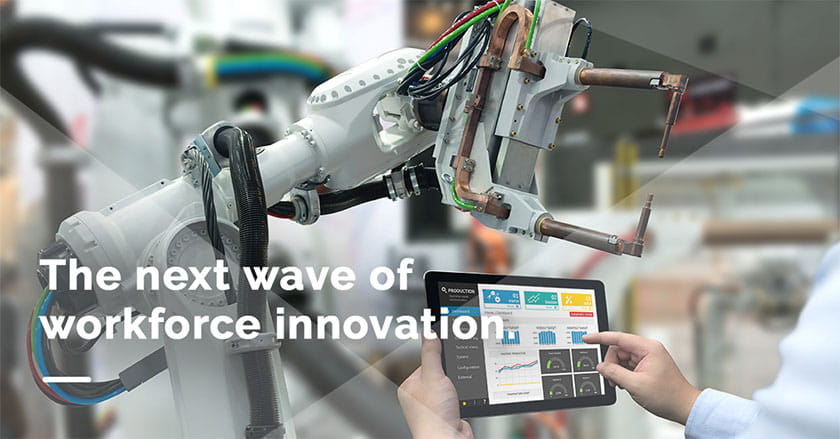Fintech Insights
Robotics: The New Wave of Digital Labor
Tony Warren, executive vice president, head of strategy and solutions management at FIS
October 09, 2017

“Today we have people working like robots. Tomorrow we will have robots working like people.” John Cryan, CEO Deutsche Bank.
In a world where machine learning and AI are driving innovative solutions in the fintech industry, robotics is a logical component.
Robotics, or “bots”, are software programmes designed to perform tasks the user assigns and ultimately controls. They can be strategically programmed to help support a variety of enterprise applications and functions in one streamlined communication channel.
The technology behind a bot is an emerging form of clerical process automation technology based on artificial intelligence (AI). The technology originates from testing solutions of yesteryear, where computer programmes were created to simulate production environments and test new software in very short amounts of time. Since these early days, many wrappers of UI, and functionality have been built on top of the legacy technology to arrive at today’s new age robotics process automation (RPA) solutions.
Changing the way we work
Since bots can be exceedingly accurate, they are helping companies form a digital workforce, where they automate routine tasks and eliminate inefficiencies. These tasks vary widely but can cover anything from responding to customer emails or online “chats”, through to processing post-trade events in the general ledger.
And this new generation of labor management is changing the workforce as we know it.
Our industry is increasingly seeing companies use machine learning and AI to develop bots with rapidly advanced capabilities for understanding, learning, communicating, and problem-solving. Bots are finding applications across functions like sales, branding and promotions, automated recruitment, intelligent Q&A, and other applications. In fact, you have probable interacted with a bot at some point today, without even realizing it. It is even becoming prevalent in social media. For example, Facebook has more than 100 bots that help power customer experiences daily.
Bots are becoming more prevalent in all industries and that’s because in addition to being so accurate, they can also fully automate rule based processes and assist with more challenging tasks. They are also able to streamline information aggregation by operating at an application’s user interface, eliminating the need for intrusive technology interventions. For example, a software robot could be used to execute data entry into an ERP system – or a full end-to-end business process.
FIS & Robotics
FIS has been working with this technology for many years and in 2012 the company was part of the industry’s first scalable RPA solution with one of the world’s largest telecom organizations. Through this effort, it was possible to automate 58 processes to significantly reduce the resourcing required to deliver the service.
Today, FIS is using bots and machine learning for many back-office processes including an automated email response. This solution has a series of bots responding to inbound emails from customers, and interestingly the bots are monitored and controlled by a series of “super-bots” that look for unusual patterns of responses to ensure the automated processes are running as expected. Additionally, FIS has developed its own autonomics platform and continues to build complex business solutions incorporating the best of breed RPA technologies, business process management, and Artificial Intelligence.
Over the past decade, within FIS’ buy-side business there has been a huge influx of investments into the passive fund / ETF industry. RPA has been steadily evolving to automate workflow processes, automating middle to back office data flows for these predictable fund types. More recently, AI is being introduced to automate exception management and error handling. AI bots to incorporate risk models and trigger rebalancing to the indices (including trade execution) completes the cycle with full automation at every step.
Another area is reconciliation where AI has been introduced to revolutionize rapid onboarding of reconciliation solutions and dynamic error handling across the financial services lifecycle. There are many more areas where RPA, Machine Learning and AI are evolving steadily with tangible use cases set to completely change the landscape of the industry.
These technologies are poised to continue to unleash new waves of digital disruption in the financial services industry. Early adapters are already seeing business-value through efficiency and accuracy – and combined with strong digital capability and proactive strategies – have a competitive advantage among competitors.
Tags: Digital, Innovation, Technology